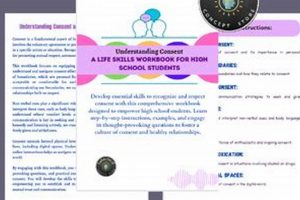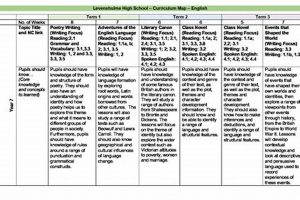Earning a college degree while still in high school offers students a significant head start in their academic and professional journeys. This typically involves completing a two-year associate degree program concurrently with high school coursework. For example, a student might attend morning classes at their high school and then afternoon classes at a local community college or university offering a dual enrollment program.
The advantages of such programs are numerous. They can lead to reduced college tuition costs and a shorter overall time to degree completion. Furthermore, early exposure to college-level academics can enhance critical thinking skills and foster a smoother transition to university life. Historically, these programs have evolved from advanced placement courses to more comprehensive dual enrollment options, providing increasingly accessible pathways to higher education for high school students.
Several avenues exist for pursuing this accelerated academic path. The following sections will detail the various options available, including dual enrollment programs, early college high schools, and online associate degree programs, outlining the eligibility requirements, application processes, and potential challenges associated with each.
Tips for Concurrent Enrollment
Planning and dedication are crucial for successfully pursuing a college degree while in high school. The following tips offer guidance for navigating this demanding but rewarding academic path.
Tip 1: Research Available Programs: Thorough investigation of local community colleges, universities, and high school partnerships is essential. Program availability, admission requirements, and course offerings vary significantly.
Tip 2: Plan Early: Begin exploring options early in high school, ideally during the freshman or sophomore year. This allows ample time for meeting prerequisites, taking necessary standardized tests, and completing application processes.
Tip 3: Understand Eligibility Requirements: Each program maintains specific eligibility criteria, which may include GPA minimums, standardized test scores, and prerequisite courses. Careful review of these requirements is vital.
Tip 4: Manage Time Effectively: Balancing high school coursework with college-level classes necessitates strong time management skills. Developing a realistic study schedule and adhering to it is paramount.
Tip 5: Seek Guidance: High school counselors and college advisors provide invaluable support. Regular communication with these individuals ensures students stay on track and receive necessary assistance.
Tip 6: Explore Financial Aid Options: Many programs offer financial aid opportunities specifically for dual-enrolled students. Thorough research and application for available funding can significantly reduce costs.
Tip 7: Consider Course Load Carefully: Starting with a manageable course load allows students to adapt to the increased academic rigor. Gradually increasing the number of college courses helps prevent overwhelm.
Careful planning and dedicated effort can yield significant benefits, paving the way for future academic and professional success. The following section concludes with essential takeaways for prospective concurrent enrollment students.
By following these recommendations and maintaining focus, students can maximize their potential for success in concurrent enrollment programs and gain a valuable advantage in their educational journey.
1. Dual Enrollment
Dual enrollment serves as a primary pathway for high school students seeking an associate degree. It allows concurrent enrollment in high school and college courses, enabling students to earn college credit while fulfilling high school graduation requirements. This accelerated approach provides a significant head start on post-secondary education, potentially saving both time and money. Dual enrollment programs establish a direct link between secondary and post-secondary institutions, facilitating a smooth transition for students. For instance, a student interested in engineering might enroll in college-level calculus and physics courses through dual enrollment, laying a strong foundation for their future engineering studies. The availability of specific dual enrollment programs often depends on partnerships between local high schools and colleges, highlighting the collaborative nature of this educational approach.
The structure of dual enrollment programs varies. Some programs offer courses directly on the high school campus, taught by qualified high school instructors. Others allow students to attend classes on the college campus, fully integrating them into the college environment. Online dual enrollment options also exist, catering to diverse learning styles and scheduling needs. This flexibility enables students to tailor their educational experience to their specific goals and circumstances. For example, a student in a rural area with limited access to on-campus college courses might opt for online dual enrollment to pursue their academic aspirations. Careful consideration of program structure is crucial for maximizing the benefits of dual enrollment.
Successful completion of a dual enrollment program can significantly impact a student’s academic trajectory. Earning college credit while still in high school provides a tangible advantage in college applications and reduces the overall time required to complete a bachelor’s degree. Furthermore, the experience gained through dual enrollment cultivates essential skills such as time management, independent learning, and academic rigor, preparing students for the demands of higher education. However, challenges such as balancing high school workloads with college-level coursework and navigating different academic environments require careful planning and support from both high school and college advisors. Ultimately, dual enrollment offers a powerful mechanism for accelerating academic progress and fostering a seamless transition to higher education.
2. Early College
Early college high schools represent a distinct pathway for obtaining an associate degree while in high school. These institutions offer a blended learning environment, integrating high school curriculum with college-level coursework. Unlike traditional dual enrollment, early college programs often provide a structured, cohort-based approach where students progress through a predetermined sequence of courses designed specifically to culminate in an associate degree. This model allows for deeper integration of high school and college academics, creating a more cohesive and supportive learning experience. For example, an early college high school might partner with a local community college to offer a specialized associate degree program in healthcare, allowing students to earn both their high school diploma and a healthcare associate degree concurrently.
The benefits of early college programs extend beyond the acquisition of college credit. These programs often feature smaller class sizes, personalized advising, and a supportive environment tailored to the unique needs of students pursuing this accelerated pathway. This focused approach can lead to increased academic engagement, higher graduation rates, and a smoother transition to four-year universities. Moreover, the cost savings associated with earning an associate degree while in high school can be substantial, reducing the financial burden of higher education. For instance, students in an early college program might complete their general education requirements through the associate degree, significantly lowering the cost and time required to complete a bachelor’s degree later. This can be particularly advantageous for students from low-income backgrounds, providing increased access to higher education.
Successful completion of an early college program equips students with a strong academic foundation and a competitive edge in college admissions. The rigorous curriculum and supportive environment foster critical thinking skills, independent learning habits, and a deeper understanding of academic disciplines. However, the demanding nature of these programs requires careful consideration of individual academic preparedness and time management skills. While early college offers a powerful pathway to an associate degree, careful planning and commitment are essential for successful navigation. Potential challenges include the accelerated pace of learning and the need to balance high school activities with college-level coursework. Addressing these challenges through effective time management strategies and access to academic support services is crucial for maximizing the benefits of early college programs.
3. Online Programs
Online programs offer an increasingly accessible pathway for high school students pursuing an associate degree. The flexibility inherent in online learning allows students to manage demanding schedules, participate in extracurricular activities, and address other commitments while simultaneously engaging in college-level coursework. This asynchronous learning model eliminates geographical barriers and expands access to diverse academic programs not readily available in traditional high school settings. For instance, a student interested in a specialized field like computer animation might find an online associate degree program offered by a university across the country, an opportunity unavailable through local dual enrollment options. This accessibility broadens educational horizons and empowers students to pursue specialized interests.
The efficacy of online programs rests on several key factors. Effective time management, self-discipline, and strong digital literacy skills are essential for success in the online learning environment. Students must demonstrate the ability to manage their own learning pace, meet deadlines independently, and engage actively in virtual classroom settings. Additionally, access to reliable internet connectivity and a conducive learning environment are crucial for maximizing the benefits of online programs. For example, a student participating in an online writing course benefits from a quiet workspace and uninterrupted internet access to fully engage in online discussions and complete writing assignments effectively. Addressing these practical considerations enhances the learning experience and contributes to successful outcomes.
Online associate degree programs offer a viable and increasingly popular option for high school students seeking to advance their academic pursuits. While the flexibility and accessibility of online learning provide significant advantages, students must carefully assess their learning style, technological preparedness, and time management skills to ensure a successful online learning experience. Potential challenges include maintaining motivation in an independent learning environment and navigating the technical aspects of online platforms. Successfully addressing these challenges allows students to leverage the power of online education to accelerate their academic journey and gain a competitive edge in higher education.
4. Rigorous Coursework
Rigorous coursework forms the cornerstone of any successful pursuit of an associate degree during high school. The accelerated nature of these programs necessitates engagement with challenging academic content, demanding a higher level of dedication and academic preparedness than standard high school curricula. This inherent rigor cultivates essential skills, including critical thinking, analytical reasoning, and effective study habits, which are crucial for success in higher education. For example, a student pursuing an associate degree in science must grapple with complex scientific concepts and engage in demanding laboratory work, developing analytical skills applicable to future scientific endeavors. This direct engagement with rigorous content strengthens academic foundations and prepares students for the demands of university-level study.
The intensity of coursework in these programs serves a crucial function: it mirrors the academic expectations of college-level learning. This early exposure to advanced concepts and rigorous study habits equips students with the skills and resilience necessary to thrive in higher education. Students learn to manage complex assignments, meet stringent deadlines, and engage in independent research, all of which are essential for success in undergraduate programs. For instance, a student completing a research project as part of their associate degree curriculum develops critical research skills and gains experience navigating scholarly resources, directly preparing them for the rigors of undergraduate research opportunities. This practical application of knowledge strengthens academic capabilities and fosters intellectual growth.
Successfully navigating the demands of rigorous coursework in high school associate degree programs requires proactive planning and effective study strategies. Students must prioritize time management, cultivate strong organizational skills, and seek support when needed. Developing effective study habits, seeking guidance from instructors and advisors, and engaging actively in classroom discussions are crucial for maximizing learning outcomes and achieving academic success. While challenging, the rigorous nature of these programs ultimately provides a valuable foundation for future academic pursuits, preparing students for the intellectual demands of higher education and fostering the skills necessary for lifelong learning.
5. Time Management
Effective time management is crucial for high school students pursuing an associate degree. Balancing the demands of high school coursework with the added responsibility of college-level classes requires meticulous planning and disciplined execution. Students must develop strategies for prioritizing tasks, allocating study time effectively, and adhering to deadlines for both high school and college assignments. Failure to manage time effectively can lead to academic overload, decreased performance, and increased stress. For instance, a student enrolled in both high school and college-level calculus courses must allocate sufficient time for studying both independently and collaboratively. A practical approach might involve scheduling dedicated study blocks each day for each subject, ensuring adequate preparation for both high school quizzes and college exams.
Practical time management techniques can significantly enhance academic performance. Creating a detailed weekly schedule that includes dedicated study blocks, extracurricular activities, and personal commitments provides a structured framework for managing time effectively. Utilizing time management tools such as calendars, planners, and task management apps can further enhance organizational skills. Breaking down large assignments into smaller, manageable tasks can make complex projects feel less daunting and promote consistent progress. Furthermore, prioritizing tasks based on deadlines and importance ensures that critical assignments receive adequate attention. For example, a student working on a long-term research paper alongside regular homework assignments could break the research paper into smaller tasks, such as literature review, data collection, and drafting, scheduling specific times for each task within their weekly schedule. This approach promotes consistent progress and minimizes the risk of last-minute cramming.
Mastering time management skills is essential not only for academic success in concurrent enrollment programs but also for developing essential life skills. The ability to prioritize, organize, and manage time effectively translates to improved productivity, reduced stress, and increased success in various aspects of life beyond academics. Challenges associated with balancing high school and college workloads can be mitigated through proactive planning, consistent application of time management techniques, and a willingness to adapt strategies as needed. Developing strong time management skills provides a solid foundation for academic achievement and equips students with valuable skills applicable throughout their personal and professional lives.
6. College Planning
Strategic college planning plays a vital role in successfully obtaining an associate degree while in high school. Careful consideration of academic goals, program selection, and prerequisite courses ensures alignment between high school coursework and the chosen associate degree pathway. This proactive approach maximizes the benefits of dual enrollment, early college programs, or online options. For example, a student aspiring to a healthcare career might strategically select high school science courses that align with the prerequisites of a health sciences associate degree program, creating a seamless academic progression and maximizing the efficiency of concurrent enrollment opportunities. Failing to align high school coursework with college program requirements can lead to scheduling conflicts, delays in degree completion, and missed opportunities for advanced placement.
Early engagement in the college planning process is essential. Meeting with high school counselors and college advisors provides valuable insights into program options, admission requirements, and potential transfer pathways to four-year institutions. This early guidance helps students navigate the complexities of concurrent enrollment and ensures informed decision-making regarding program selection. For instance, a student unsure about their career path might benefit from career aptitude assessments and discussions with college advisors to explore various academic disciplines and identify suitable associate degree programs aligned with their interests and aptitudes. This informed approach facilitates strategic course selection and maximizes the long-term benefits of concurrent enrollment.
Effective college planning provides a roadmap for academic success, minimizing potential challenges and maximizing the benefits of pursuing an associate degree while in high school. This proactive approach facilitates informed decision-making, ensuring alignment between high school studies and long-term academic and career goals. Understanding the integral connection between college planning and concurrent enrollment empowers students to navigate the complexities of higher education successfully, optimizing their academic journey and laying a strong foundation for future success.
Frequently Asked Questions
This section addresses common inquiries regarding the pursuit of an associate degree during high school.
Question 1: What are the typical admission requirements for dual enrollment programs?
Admission requirements vary by institution and program. Common requirements include a minimum GPA, specific prerequisite courses, standardized test scores (such as the ACT or SAT), and recommendations from high school counselors. Directly contacting the specific institutions of interest is recommended for obtaining precise admission requirements.
Question 2: How does earning an associate degree in high school affect college applications?
Earning an associate degree demonstrates academic rigor, advanced standing, and a commitment to higher education, often strengthening college applications. It can lead to advanced placement, course waivers, and potential scholarship opportunities.
Question 3: What is the difference between dual enrollment and early college high schools?
Dual enrollment allows high school students to take college courses while still in high school. Early college high schools offer a structured program specifically designed for students to earn an associate degree concurrently with their high school diploma.
Question 4: Are online associate degree programs as rigorous as traditional on-campus programs?
Accredited online programs maintain rigorous academic standards comparable to on-campus programs. However, the learning environment differs, requiring self-discipline, time management skills, and technological proficiency.
Question 5: How can students balance the workload of high school and college courses?
Effective time management, prioritization, and organizational skills are essential. Developing a realistic study schedule, breaking down large assignments into smaller tasks, and seeking support from teachers and advisors are crucial.
Question 6: What are the potential cost savings of earning an associate degree in high school?
Earning an associate degree while in high school can significantly reduce overall college tuition costs by fulfilling general education requirements and potentially shortening the time required to complete a bachelor’s degree.
Careful consideration of these frequently asked questions provides further clarification regarding the process and benefits of pursuing an associate degree while in high school. Prospective students are encouraged to seek individualized guidance from academic advisors to address specific circumstances and goals.
The subsequent section will provide a concluding summary and key takeaways for prospective students considering this accelerated academic pathway.
Conclusion
Obtaining an associate degree while in high school presents a significant opportunity for accelerated academic advancement. This exploration has detailed various pathways, including dual enrollment, early college high schools, and online programs. Key factors for success include rigorous coursework, effective time management, and strategic college planning. Understanding program requirements, balancing workloads, and leveraging available resources are crucial for navigating this demanding yet rewarding academic journey. The potential benefits, including reduced college costs and a head start in higher education, make this a compelling option for motivated students.
The pursuit of an associate degree in high school signifies a commitment to academic excellence and a proactive approach to higher education. This accelerated pathway offers a transformative opportunity, empowering students to reach their full potential and embark on a path toward lifelong learning and career success. Further exploration of individual circumstances and available resources is encouraged for those seeking to embark on this enriching academic endeavor.







